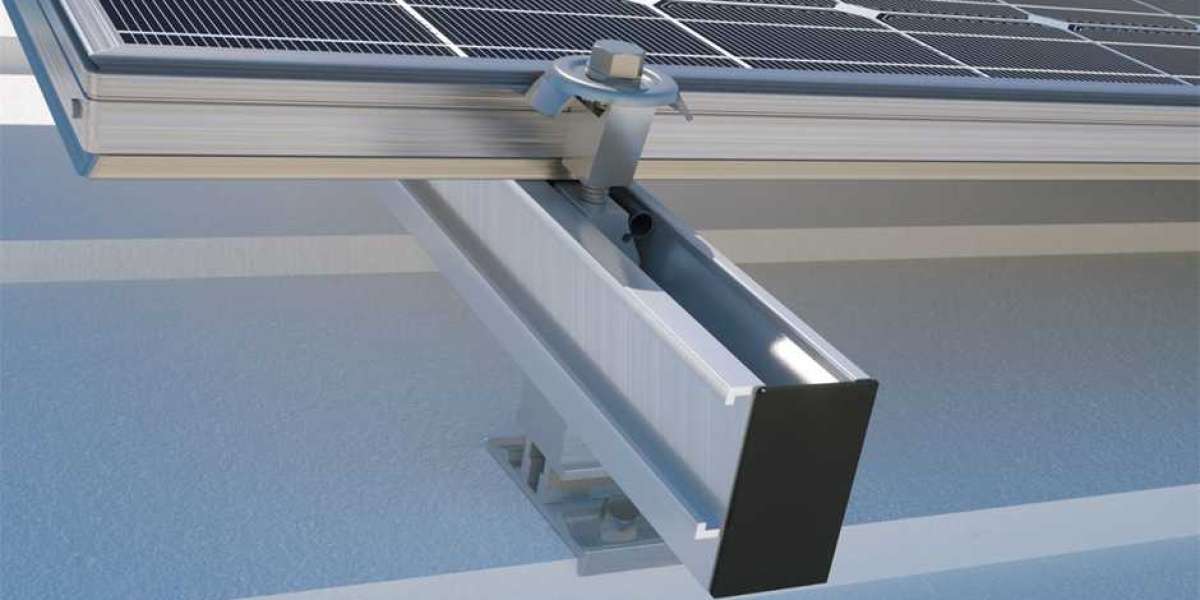1.Components of a solar system
A solar system is a system that uses solar energy to generate electricity and heat, and consists of the following parts: solar panels, power systems, energy storage systems, energy management systems, power inverters, weather monitoring systems, etc.
The solar panel is the core part of the solar power system, which can convert the sun's light energy into electricity. The power system consists of cable connections, safes, battery packs, etc. It is usually used to directly supply the power generated by solar panels to electronic equipment or grid systems.
The energy storage system is a system capable of storing the electric energy generated by the solar panel, generally using a storage battery or a storage tank to improve the utilization rate of the solar energy.
The energy management system is mainly based on the electronic controller as the core system, which can automatically adjust the output voltage and current of the solar panel to ensure stable output power and power, while protecting the system from overvoltage, overcurrent and short circuit.
The power inverter is the core unit that converts direct current into alternating current. It can convert the direct current generated by solar panels into the alternating current we use every day. The weather monitoring system can monitor the weather conditions and the performance of solar panels in real time to improve the overall performance of the system.
To sum up, the composition of the solar energy system is mutual cooperation. Through the joint action of multiple parts, the solar energy is converted into the energy needed by people, and a more environmentally friendly and energy-saving solution is brought to people's life and work.
Solar systems not only generate electricity, but also use the heat of the sun for heating. The solar water heater system mainly includes a solar collector, a water tank, a water circulation system and a temperature control system.
2.How are solar systems heated?
The solar collector is the most important part of the solar water heater system. It consists of a series of metal plates or pipes covered with black coating to collect the heat energy of the sun. When sunlight hits the surface of the solar collector, the sun's thermal energy is absorbed and converted into heat medium, such as water or other liquids. The higher the daylighting rate of the solar collector, the more sunlight the area has, and the higher the heat collection efficiency.
The water tank is the heat storage part of the solar water heater system. It is usually placed under the heat collector and can store the heat energy converted from solar energy to meet the needs of daily heating or bathing. The water tank of the solar water heater system is usually divided into two parts: upper water and lower water. The upper water part is used to store isothermal water, and the lower water part is used for hot water storage.
The water circulation system mainly pumps water to the solar collector, circulates it to the water tank for storage through heat conduction and accumulation, and then sends hot water to the user through recirculation. The realization of the circulation system requires a reasonable layout of piping and pumps.
On the one hand, the temperature control system can control the temperature in the water tank to ensure that the water stored in the water tank is always at an appropriate temperature; on the other hand, it can judge the working status of the solar collector and automatically control it according to whether there is light or temperature.
To sum up, the solar system can collect solar thermal energy through the solar collector, and then heat it through the water tank, water circulation system and temperature control system, so as to realize the purpose of solar heating. The solar water heater system is an environmentally friendly, energy-saving and reliable heat supply solution.
3.Solar Systems and Heat Pumps
Both solar systems and heat pumps are representatives of renewable energy, they can replace traditional fuels, and while achieving green environmental protection, they can also effectively reduce energy costs. While both solar systems and heat pumps can provide heat, they don't work exactly the same and have different components.
Solar energy systems mainly use solar power to generate electricity and heat, and collect solar energy through solar panels and convert it into electricity or heat. In a solar water heater system, solar collectors can convert the heat of the sun into hot water, which can be used for heating or bathing in homes or offices.
The heat pump uses low-temperature heat storage energy such as geothermal or air to release the heat energy carried in it through the process of compression and expansion, and heat it. In the heat pump system, it mainly includes evaporators, compressors, condensers and expansion valves. Professional heat pump producers will constantly check the cooperation of these parts before shipment to ensure that low-temperature energy is converted into high-temperature energy and supplied to user.
Although solar systems and heat pumps work on different principles, they are both representatives of renewable energy, and both can reduce energy costs while achieving green environmental protection. In addition, the scope of use of solar energy systems and heat pumps is also different. Solar energy systems are more suitable for areas with long sunshine hours and sufficient sunlight, while heat pumps are more suitable for areas with relatively short sunshine hours. In addition, in terms of maintenance costs, heat pumps are cheaper to maintain and have a longer lifespan.
To sum up, both solar energy systems and heat pumps are representatives of renewable energy. They have their own advantages and disadvantages. Different systems should be selected for application according to actual needs in order to achieve more efficient and environmentally friendly energy utilization.

4.Solar system vs air source heat pump comparison
Both solar systems and air source heat pumps are renewable energy sources that allow for more environmentally efficient use of energy and lower energy costs. The solar energy system mainly uses solar energy to generate electricity and heat, while the air source heat pump converts the low-temperature heat storage energy in the air into high-temperature heat energy through the process of compression and expansion. Both systems have their own advantages and disadvantages. According to different usage requirements, choose the appropriate system for application to achieve more efficient and environmentally friendly energy utilization.
To learn more, please contact a professional air source heat pump companies.
tags :heat pump producers, swimming pool heat pump manufacturers, air source heat pump supplier, heat pump, air source heat pump, solar system








